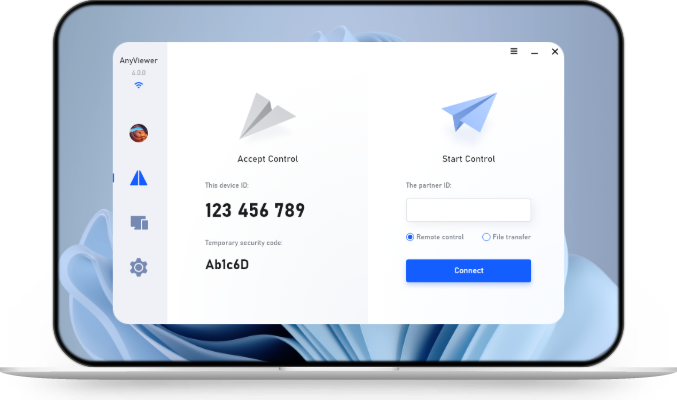Overcoming Virtual Hurdles: Tackling Zoom Audio Latency with AnyViewer
This article delves into the common issue of "Zoom audio latency," providing insights into causes and practical tips for reduction. Explore AnyViewer as a preferable alternative with no audio latency, enhancing your virtual communication experience with clarity and efficiency.
Introduction
In the landscape of virtual meetings, seamless communication is paramount. However, challenges such as "Zoom audio latency" can hinder the effectiveness of virtual interactions. This article aims to unravel the causes of audio latency in Zoom, provide practical tips for reduction, and introduce AnyViewer as a latency-free alternative, ensuring crystal-clear audio quality in your virtual communication.
Understanding Zoom Audio Latency
Definition and Causes of Audio Latency in Zoom
Audio latency in Zoom refers to the delay between speaking into a microphone and hearing the corresponding sound on the other end. Causes include:
- Internet Connectivity: Unstable internet connections can lead to delays.
- Device Performance: Outdated or insufficient hardware may contribute to latency.
- Software Processing: Zoom's audio processing can introduce latency.
Impact on User Experience and Communication
Audio latency can significantly impact user experience by causing:
- Communication Breakdown: Delays can lead to misunderstandings and disruptions.
- Decreased Engagement: Participants may disengage due to the frustration of latency.
- Professional Impression: Clear communication is crucial for a professional image in virtual settings.
Common Misconceptions about Audio Latency
Misconceptions include assuming latency is solely the platform's responsibility or neglecting the impact of individual device performance. Understanding these misconceptions is crucial for effective troubleshooting.
Tips to Reduce Zoom Audio Latency
Adjusting Audio Settings in Zoom
- Microphone Sensitivity: Adjust sensitivity to avoid unnecessary audio processing delays.
- Echo Cancellation: Enable Zoom's echo cancellation feature to reduce audio interference.
- Advanced Audio Settings: Explore Zoom's advanced audio settings for further customization.
Checking and Optimizing Internet Connection
- Stable Connection: Use a reliable and high-speed internet connection for smoother audio transmission.
- Close Unnecessary Apps: Reduce bandwidth usage by closing unnecessary applications during Zoom meetings.
Choosing the Right Hardware for Audio Clarity
- Quality Microphone: Invest in a high-quality microphone for clear audio input.
- Updated Audio Drivers: Ensure audio drivers are updated to the latest versions for optimal performance.
AnyViewer: A Zoom Alternative with No Audio Latency
Introduction to AnyViewer
AnyViewer stands out as a robust alternative to Zoom, especially concerning audio latency. Unlike Zoom, AnyViewer prioritizes minimal latency, making it an ideal choice for virtual communication.
Comparison with Zoom for Audio Latency
AnyViewer offers advantages in terms of audio latency:
- Real-Time Communication: AnyViewer ensures minimal delay, providing near-instantaneous audio transmission.
- Cross-Platform Support: Seamlessly connect and communicate across different operating systems with AnyViewer.
Features that Make AnyViewer a Preferable Choice
AnyViewer's features make it a compelling alternative:
- Latency-Free Remote Access: AnyViewer excels in providing remote access without audio delays.
- Secure Connections: Ensures encrypted and secure communication during virtual interactions.
- Multi-Device Support: Facilitates communication across various devices without compromising on audio quality.
Enhancing Virtual Communication with Clear Audio
Importance of Clear Audio in Virtual Meetings
Clear audio is crucial for effective virtual communication by:
- Facilitating Engagement: Participants can actively engage with clear and timely audio.
- Conveying Nuances: Clarity allows for the accurate conveyance of expressions and tones.
- Professionalism: A clear audio quality contributes to a professional and polished virtual image.
Tips for Creating an Optimal Audio Environment
- Noise Reduction: Minimize background noise for a cleaner audio output.
- Microphone Positioning: Position the microphone correctly for optimal sound capture.
- Invest in Quality Audio Equipment: High-quality headphones and microphones enhance the overall audio experience.
Role of Both Software and Hardware in Audio Quality
The synergy of software and hardware is vital for optimal audio quality in virtual communication. Regular updates and well-maintained hardware contribute to a seamless audio experience.
Conclusion
In conclusion, addressing the challenge of "Zoom audio latency" involves understanding its causes and implementing practical tips for reduction. The introduction of AnyViewer as a latency-free alternative offers a seamless solution for those seeking a superior virtual communication experience. By adopting the provided tips and exploring alternatives, users can elevate their virtual meetings, ensuring clear and efficient communication.
FAQs
Does AnyViewer support virtual meetings with multiple participants like Zoom?
Yes, AnyViewer supports virtual meetings with multiple participants, providing a collaborative environment similar to Zoom.
Can AnyViewer be used for remote access to mobile devices without audio latency?
Absolutely, AnyViewer ensures minimal audio latency during remote access sessions, including those involving mobile devices.
Are the tips for reducing Zoom audio latency applicable to other video conferencing platforms?
Yes, many tips for reducing audio latency are applicable to various video conferencing platforms, as they often share common underlying issues related to internet connection and device performance.

